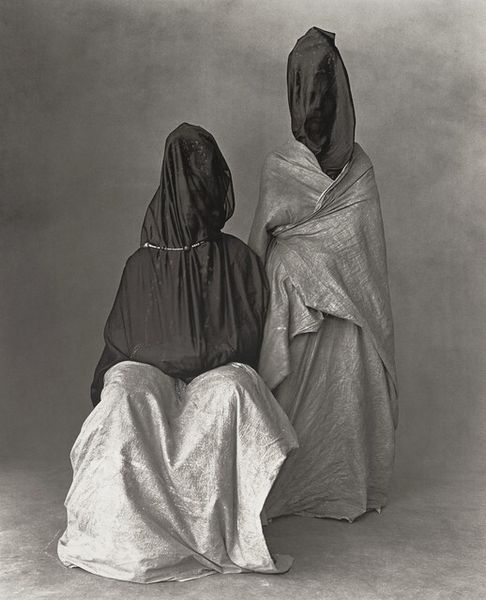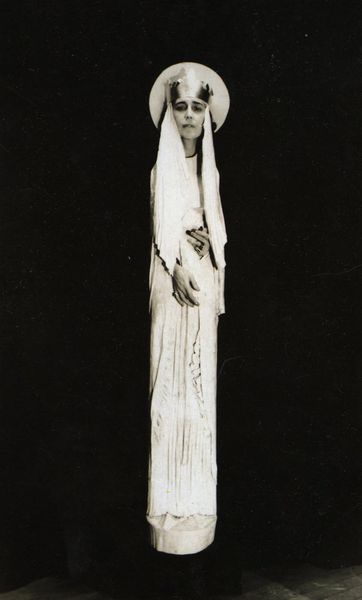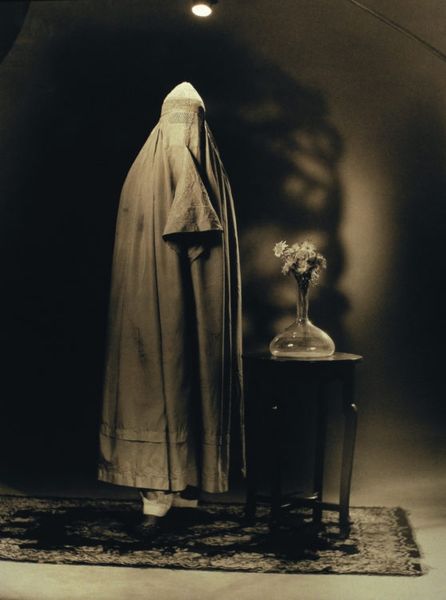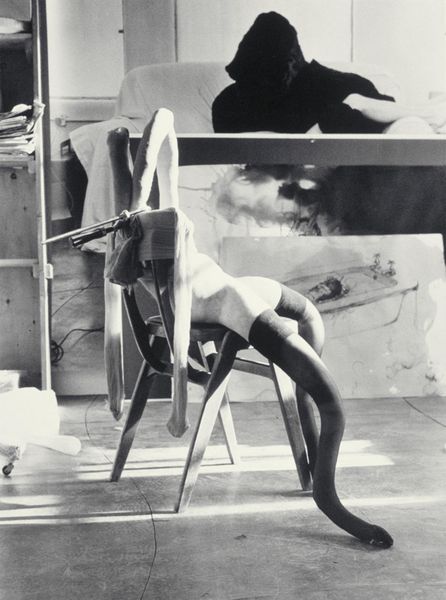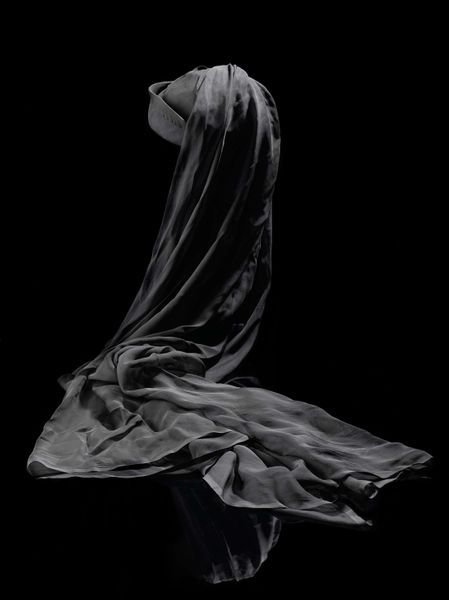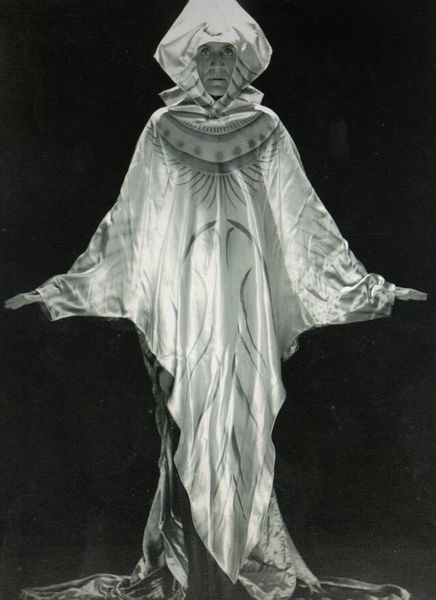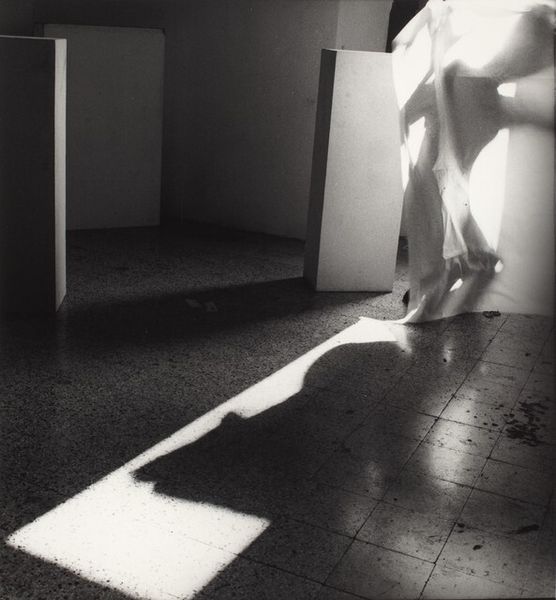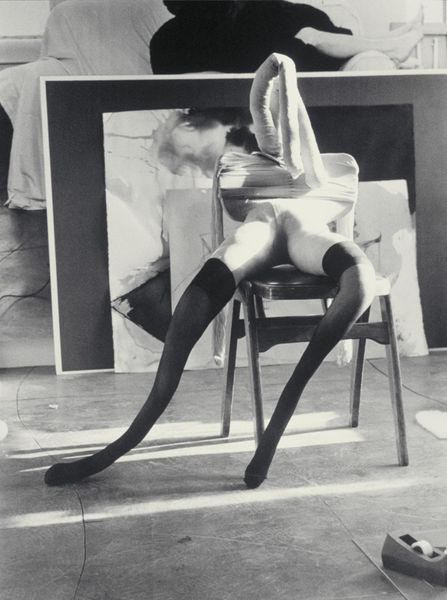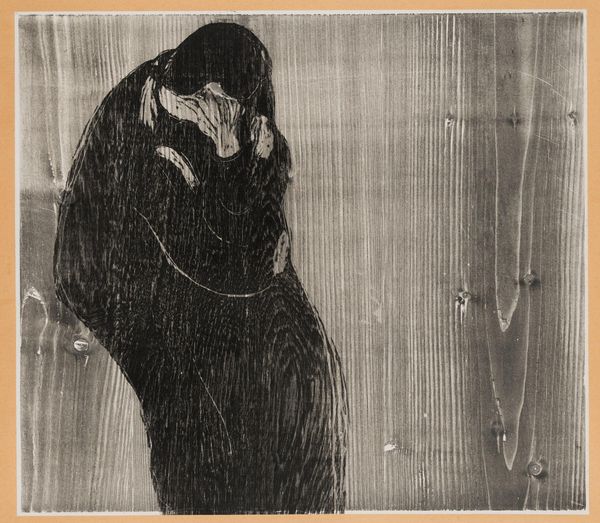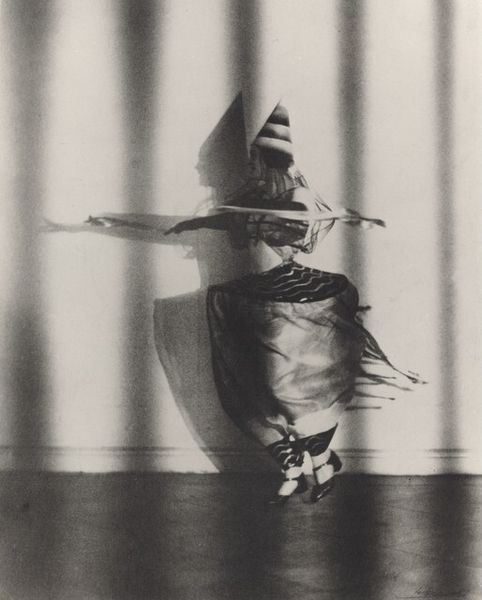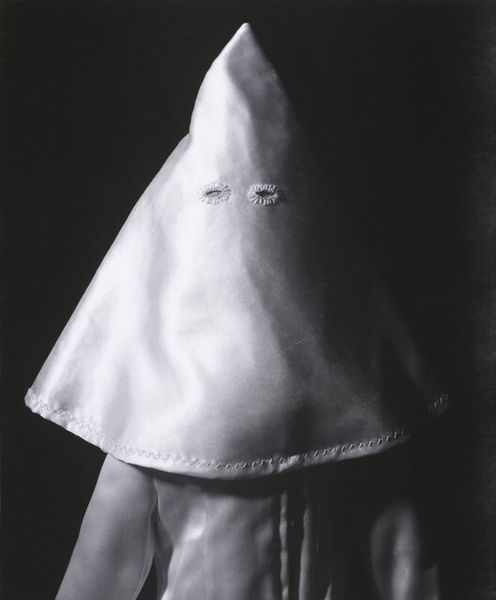
Copyright: Shadi Ghadirian,Fair Use
Curator: Shadi Ghadirian’s photographic work, “Qajar #11,” produced in 1998, presents a powerful visual statement through its unique use of historical context and contemporary concerns. Editor: Immediately, the draping and fabric really capture my eye. The textures are so wonderfully pronounced and it creates this sense of weight, but also fluidity, almost like liquid metal. Curator: Exactly. The Qajar series overall draws inspiration from the Qajar dynasty era in Iran, a time of significant cultural and social transformation. By placing modern objects and themes within the visual language of historical portraiture, Ghadirian questions the representation of women in Iranian society. Editor: What really strikes me here is how she is employing, effectively using light and shadow in order to articulate not only the cloth, but the figures under the cloth. This allows you to not see an image, but imagine and participate actively. Curator: It is interesting to think about it. Ghadirian's photographs often function as critical commentary, probing at issues of identity, restriction, and agency experienced by Iranian women, offering an intersectional narrative that blends past and present. She uses both staged settings and real objects to represent societal pressures and imposed identities. Editor: Definitely, and in using photography, a medium often associated with capturing reality, to create these surreal and symbolic compositions she asks us to think about not only the subjects of her works, but the materials which dictate them and how they impact one another. Curator: Absolutely. Her postmodern approach creates space for examining social structures and historical contexts, all from a place of challenging existing power dynamics. This artistic statement makes you really think about history and our current societal constraints. Editor: In essence, her practice illuminates a powerful understanding that both art making, as labor, and material’s intrinsic attributes can facilitate social transformation, especially in places with very restrictive ideas about female participation.
Comments
No comments
Be the first to comment and join the conversation on the ultimate creative platform.
